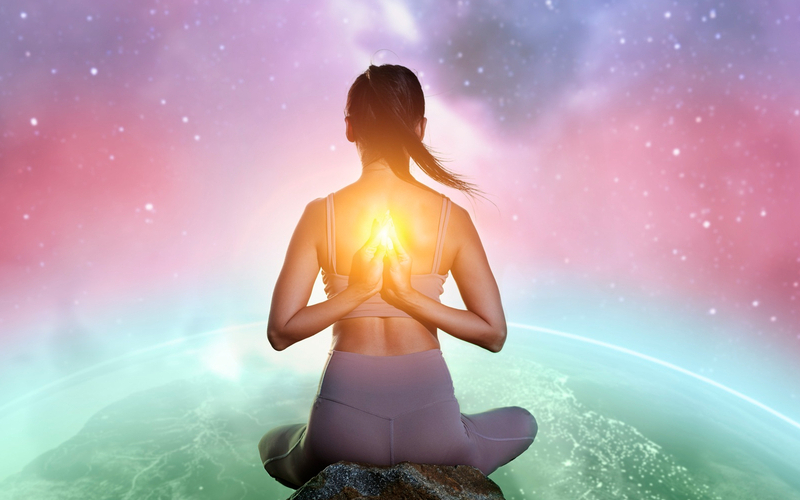Awakening Your Inner Light: A Guide to Spiritual Growth
Thu, 25 Sep 2025

Follow the stories of academics and their research expeditions

Life brings us moments of joy, but also challenges that leave emotional wounds. Stress, heartbreak, trauma, and daily struggles can create emotional blockages that affect not only the mind but also the body and spirit. This is where emotional healing becomes essential. It is the process of releasing old wounds, restoring inner balance, and opening the heart to inner peace and wholeness.
Unlike physical healing, which focuses on the body, emotional healing addresses the subtle yet powerful layers of thoughts, feelings, and energy. When emotions are healed, we feel lighter, more grounded, and more connected to our authentic self.
At its core, emotional healing is the art of acknowledging, accepting, and transforming emotions. It’s not about suppressing pain but learning to process it with love and awareness. Emotional healing allows us to release the past, embrace the present, and step into the future with clarity and strength.
Key aspects of emotional healing include:
Letting go of unresolved grief or anger
Releasing fear, guilt, and shame
Cultivating forgiveness and compassion
Opening to self-love and acceptance
When emotions are healed, we naturally experience more joy, clarity, and holistic wellness.
Unhealed emotions don’t just stay in the mind—they live in the body and spirit. Stress and trauma can show up as physical pain, fatigue, or even illness. Energy blockages may also form in the chakras, creating imbalance in our emotional and spiritual flow.
For example:
A blocked heart chakra may cause difficulty in trusting others.
An overactive solar plexus chakra can lead to anxiety or control issues.
An imbalanced sacral chakra may affect creativity and relationships.
Through chakra balancing and energy healing, these emotional imbalances can be released, restoring flow and harmony.
The journey of healing emotions is deeply personal, but there are universal practices that bring transformation.
a) Meditation for Inner Peace
Meditation is one of the most effective tools for emotional healing. By calming the mind, we create space to observe emotions without judgment. Even 10 minutes of daily meditation can help dissolve stress and restore clarity.
b) Journaling for Release
Writing down emotions gives them a voice. Journaling is a safe space to release anger, sadness, or confusion and transform them into self-awareness.
c) Energy Healing Practices
Reiki, sound therapy, and chakra balancing help clear emotional blockages at the energetic level. These practices bring deep relaxation and allow emotions to flow naturally.
d) Affirmations for Self-Love
Positive affirmations like “I am worthy of love and healing” or “I release what no longer serves me” reprogram the subconscious mind for emotional wellness.
e) Movement and Breathwork
Yoga, dance, and conscious breathing help release stored emotions from the body, creating lightness and freedom.
One of the most powerful aspects of emotional healing is forgiveness. Not necessarily for others—but for yourself. Carrying resentment or guilt only deepens wounds. Forgiveness is not about condoning what happened; it’s about freeing yourself from emotional chains.
When we forgive, we shift from pain to empowerment, opening the heart to peace and compassion.
Without self-love, healing is incomplete. Many emotional wounds come from feeling unworthy, unloved, or disconnected from our true essence. By embracing self-love practices—such as affirmations, self-care rituals, and honoring boundaries—we rebuild trust with ourselves.
Holistic wellness begins when we treat ourselves with kindness, patience, and acceptance. Self-love becomes the soil from which healing naturally grows.
Every time we heal an emotion, we expand spiritually. Emotional healing is not just about feeling better—it’s about awakening to a deeper truth.
When emotions are balanced:
Intuition becomes stronger.
The heart opens to unconditional love.
We align with our higher self and purpose.
Thus, emotional healing and spiritual awakening go hand in hand.
Here’s a simple yet powerful daily ritual for emotional balance:
Create a Sacred Space: Light a candle or play soft music.
Breathe Deeply: Center yourself with slow, conscious breaths.
Acknowledge the Emotion: Name what you are feeling without judgment.
Release: Write the feeling on paper and tear it or burn it safely.
Affirm: Repeat: “I release and I am at peace.”
Close with Gratitude: Thank yourself and the universe for the healing.
Emotional healing is not a destination—it’s a lifelong journey. It asks for patience, courage, and compassion, but the rewards are profound. When we heal emotionally, we free ourselves from the past and step into the present with inner peace, balance, and self-love.
Remember: every tear shed, every breath released, and every moment of awareness is part of your healing. Trust the process, embrace the journey, and allow yourself to shine. ????✨
Thu, 25 Sep 2025

Thu, 25 Sep 2025

Thu, 25 Sep 2025

Leave a comment